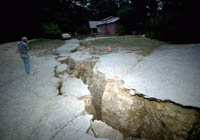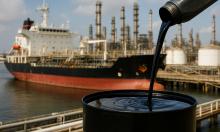USA's California completely unprepared for another serious earthquake
A century ago, residents of San Francisco were roused from their sleep by a disturbing natural alarm clock. A powerful earthquake, measuring 7.8 on the Richter scale, shook the city for an entire minute in the early morning of April 18, 1906. The scale of devastation in San Francisco was due partly to a lack of earthquake building knowledge at the time—a discipline that has since developed largely because of that event, scientists say. In 1906 there was no seismic building code, no clear understanding of plate tectonics or where the major faults were located.

Looking at what remained of the cityscape in San Francisco, as well as observing what other earthquakes knocked down in the following years, allowed California's structural engineers to build upon their knowledge. The shortcomings have been gradually worked out, to the point where today we have a fairly good understanding of seismic design requirements.
The same can't be said of other earthquake-prone regions across the county, including several big cities whose residents might not even realize they're at risk.
The 1906 quake would become one of the most damaging in California's history, according to the U.S. Geological Survey (USGS). An estimated 3,000 people died in the disaster and it cost at least $524 million in property damage. City officials in the greater San Francisco area are commemorating the somber anniversary with exhibits and memorial dedications.
Meanwhile, earthquake experts are planning for what could happen when (not if) a quake of similar proportions tests the country again. West Coast cities like San Francisco and Los Angeles should come through with better results, engineers say, even though it took several decades for the lessons learned in 1906 to be put into effect.
The watershed moment came in 1971, when a magnitude 6.7 quake shook the city of San Fernando, California. That earthquake proved enormously costly, leading builders to search for methods that would limit financial loss to their structures in the future.
Experts call this "performance-based" design, and it happens to complement the kind of designs that aim to keep the people inside buildings safe.
"The key is to put the damage in places that do not compromise the vertical-support system for the structure. This way the structure can absorb energy without falling down. This is similar to the crumple-zone at the front of cars. You want the car to absorb energy, but leave the passenger compartment undamaged, experts say.
Employing this kind of technology in all of its new structures today, California now leads the way in earthquake building codes. Engineers believe that the rest of the country is still at risk for structural devastation, however.
The most dangerous places are Seattle, Vancouver, and New Madrid [Missouri]. These are the places that have the potential (albeit low probability) of a high-consequence event.
Most of the Midwest is filled with older un-reinforced masonry construction, which poses the greatest risk.
Several other geologists have warned of the risk near a stretch of land between southeastern Missouri and Memphis, Tennessee called the New Madrid Seismic Zone. The region was rocked by three great earthquakes—all near or over magnitude 8—in the early 1800s.
What is in store for New York?
"Potentially very, very badly," said Susan Hough, a seismologist with the USGS in Pasadena. "Without question, I would rather be in San Francisco during a [magnitude] 7.8 earthquake than in New York City during a [magnitude] 6.8—and the latter is entirely possible."
And it isn't the hundred-story skyscrapers that people need to worry about, Hough told LiveScience.
"The very tall buildings in New York City should be okay: they are anchored in bedrock and designed with enough wind resistance that they are generally strong enough for earthquakes as well," she said. "It's all of the smaller masonry buildings that are scary to think about. And the infrastructure could be a total shambles: they have roads and bridges that are threatening to collapse under their own weight."
Source: Livescience.com
Subscribe to Pravda.Ru Telegram channel, Facebook, RSS!





